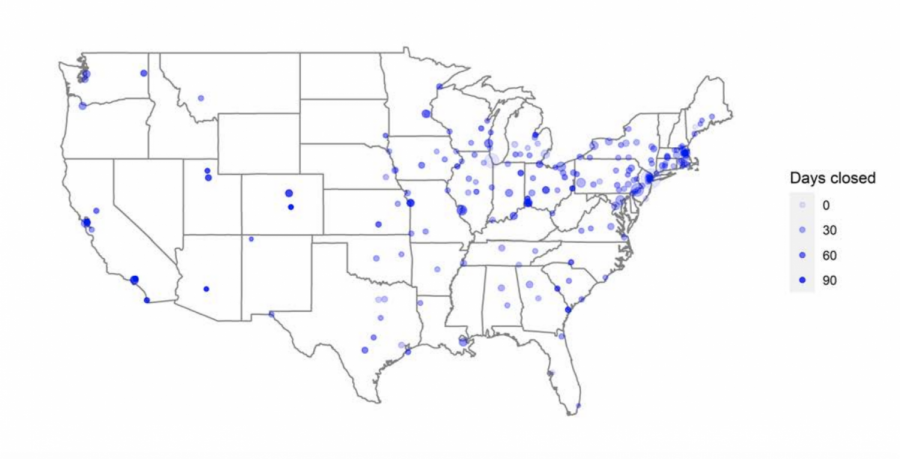5 Ways School Life During COVID-19 Compares to the 1918 Flu Pandemic
National Bureau of Economic Research
Map of U.S cities in 1918-19 school closure lengths.
April 1, 2021
The 1918 flu pandemic is considered one of the deadliest pandemics in human history, with an estimated 50 million deaths worldwide and over half a million deaths in the U.S. This makes one wonder what school life would have been like during that time, a time in which medicine was so much less advanced.
1. In-person vs at home
Similar to today, decisions on school closures in 1918 were made at the local level and varied from city to city. Some major school districts such as New York, Chicago, and interestingly enough, New Haven, remained open during the height of the flu pandemic, whereas major cities such as St. Louis and Los Angeles closed their doors during the major flu waves.
2. Homework
One hundred years ago, the police of Los Angeles were needed to deliver homework to 90,000 students while school was closed. This seems like a major coordination challenge, so one must be thankful we have the Internet today to help with distributing our paperless work.
3. Length of closure
Even though the flu of 1918-19 was considered deadly for school-age children, schools only closed for an average of 36 days across all American cities. Many officials considered school a safer environment for younger students because of better ventilation and access to school nurses as opposed to being in crowded urban homes. It is likely that many schools across the nation have eclipsed 1918’s 36 day average as we enter the second year of this pandemic.
4. Attendance
During the 1918-19 school year children from ages 6 to 14 had the highest attendance across the nation, whereas attendance for high school and college students reached considerable lows. Even though complete data is not released yet for covid-related attendance, attendance numbers today will likely be alarmingly low as well.
5. Missing Out
Students of 1918 and 2020 share the unique experience of living through a school year unable to see their friend’s faces every day, worrying about an uncontrollable virus shutting down the entire world. Despite the craziness going on outside, like previous generations, we continue to go to school today with masks on our faces to make the best of a bad situation.





